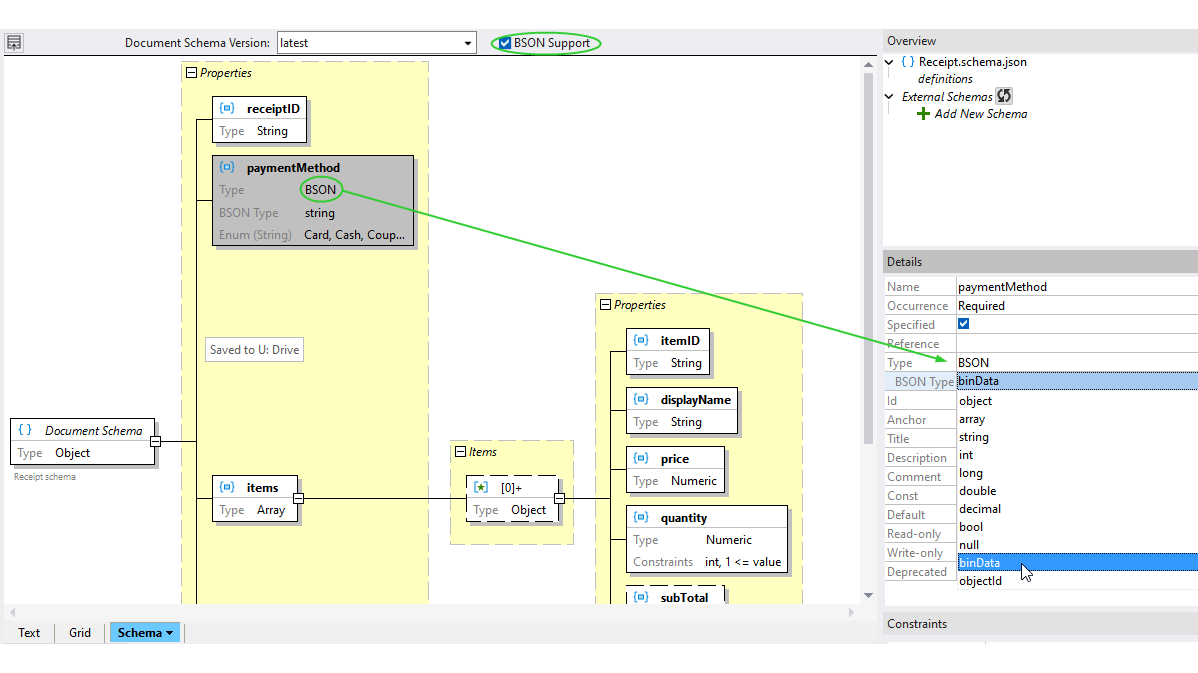Since BSON is a binary format, it cannot be edited readily in a text-based editor. However, XMLSpy includes a unique, graphical BSON editor called Grid View. Editing BSON in Grid View allows you to understand the structure of the binary document at a glance. You can scroll and expand/collapse items to view the document structure at different levels. The structure can be easily modified by adding, deleting, or moving objects in the grid. Entire blocks of text can be reorganized (for example, by sorting them or moving them).
Functionality like table mode for repeating nodes, automatic type detection, and in-cell editing commands make it easy to understand the structure of the binary document and edit it as needed.

In addition to graphical editing in Grid View, XMLSpy supports:
- Validation of BSON against JSON Schemas
- Conversion between BSON and JSON or YAML
- Generation of BSON instances from JSON Schema
- Querying BSON data with XQuery




